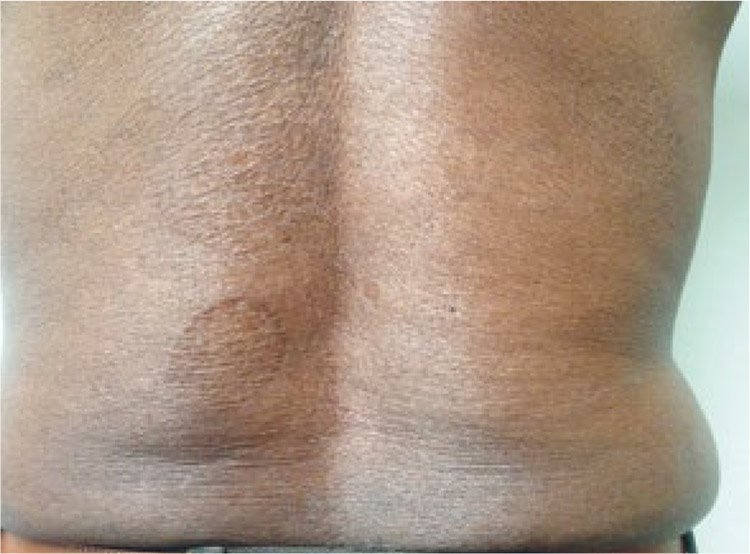Pityriasis rotunda in Colombia
DOI:
https://doi.org/10.29176/2590843X.322Keywords:
Pytiriasis, ichthyosisAbstract
Pityriasis rotunda is a rare cutaneous of the keratinization disorder. It is characterized by hyper or hypopigmented, geometrically perfect circular sharply defined patches or plaques with dry ichthyosiform scaling. Lesions are frecuently distributed over the trunk and upper extremities. This condition was described in Japan by Toyoma in 1906, and had been previously called pityriasis circinata and acquired pseudoichthyosis. The etiology remains unknown; most authors believe that it is a form of acquired ichthyosis, a delayed presentation of congenital ichthyosis, or a cutaneous manifestation of systemic disease. There are two forms of presentation: Type I: in black or Asian people older than 60 years, often seen in association with malignancies or systemic diseases and type II: in younger and white people with familiar association. We present a 75 years-old black man with clinical and histopathological findings of pitiriasis rotunda with complementary studies still without alterations.
Author Biographies
Giovanni Manrique
Médico dermatólogo, Universidad Militar Nueva Granada, Hospital Militar Central, Bogotá, D.C., Colombia
Liliana Herrera
Médico dermatólogo, Universidad Militar Nueva Granada, Hospital Militar Central, Bogotá, D.C., Colombia
Isabel Bustamante
Médica, residente de Dermatología, Universidad Militar Nueva Granada. Hospital Militar Central, Bogotá, D.C., Colombia
María Fernanda Ordóñez
Médica, residente de Dermatología, Universidad Militar Nueva Granada. Hospital Militar Central, Bogotá, D.C., Colombia
References
Grimalt R, Gelmetti C, Brusasco A, Tadini G, Caputo R. Pityriasis rotunda: Report of a familial occurrence and review of the literature. J Am Acad Dermatol 1994;31:866-71.
https://doi.org/10.1016/S0190-9622(94)70248-9
Zur RL, Shapero J, Shapero H. Pityriasis rotunda diagnosed in Canada: Case presentation and review of the literature. J Cutan Med Surg. 2013;17:426-8.
https://doi.org/10.2310/7750.2013.13013
Hasson I, Shah P. Pityriasis rotunda. Indian J Dermatol Venereol Leprol. 2003;69:50-1.
Makino T, Mizawa M, Seki Y, Hayashi M, Shimizu T. Decreased filaggrin-2 expression in the epidermis in a case of pityriasis rotunda. Clin Exp Dermatol. 2016;41:215-7.
https://doi.org/10.1111/ced.12716
Bakry OA, Samaka RM. Photoletter to the editor: Pityriasis rotunda. J Dermatol Case Rep. 2012;6:90-2.
https://doi.org/10.3315/jdcr.2012.1113
Ena P, Cerimele D. Pityriasis rotunda in childhood. Pediatr Dermatol. 2002;19:200-3.
https://doi.org/10.1046/j.1525-1470.2002.00080.x
Ramos-E-Silva M, Carvalho JC, Carneiro SC. Cutaneous paraneoplasia. Clin Dermatol. 2011;29:541-7.
How to Cite
Downloads

Downloads
Published
How to Cite
Issue
Section

| Article metrics | |
|---|---|
| Abstract views | |
| Galley vies | |
| PDF Views | |
| HTML views | |
| Other views | |






